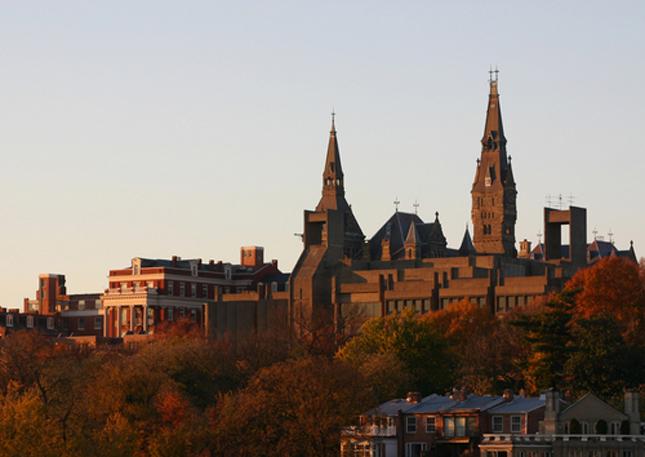Georgetown University’s 10-year campus plan, long negotiated and disputed among the Georgetown neighborhood, was unveiled on December 31 to criticism and disapproval.
The official filing did omit particular issues taken up by Citizen’s Association of Georgetown in recent months: the University eliminated plans to create student housing on the 1789 block, which CAG opposed citing that it falls outside the defined campus area. It also as dropped the proposed extension of the University’s heating and cooling chimney.
The biggest issue facing the plan is its lack of initiative in creating sufficient student housing within the University campus, which would have in turn bled less students into the surrounding Georgetown neighborhood. The University plans to increase enrollment by about 3,200 students from its 2009 level without providing much in the way of additional on-campus housing. Furthermore, there is distrust of the legitimacy of Georgetown’s proposed enrollment increase, citing that in 2000 GU told the community that they would enroll about 3,800 graduate students by 2010; their current count is 6,275.
“It is clear that GU will continue to rely on existing homes in the surrounding neighborhoods to house a substantial portion of its ever expanding student population,” wrote CAG in a December newsletter. “GU can not continue to use the neighborhood for its residence halls…In Georgetown, over 113 houses have been turned from single family houses to group rentals and it is difficult and expensive to convert them back. Many of these residences are poorly maintained and house more people than legally allowed, often bringing both excessive trash and noise. This result has prompted residents to move out of the area.”
CAG proposed that the University reinstate its goal from 1990 to house 100% of its undergraduates on campus and agree to reasonable caps on enrollment for graduate and undergraduate students.
“The plan is disappointing in that it proposes no new student housing,” wrote CAG president Jennifer Altemus in a statement. “While the omission of [other] initiatives is recognized, no progress has been made on the community’s principal demand that the University move a substantial number of students back on campus or house them in a satellite campus.”
CAG will continue appealing to the D.C. Zoning Board with their suggestions for the plan.
Councilmember Jack Evans has also criticized the plan. “I was disappointed to learn that the University’s proposed campus plan does not include any significant action to move more undergraduate students onto the main campus,” Evans stated in a press release.
“While I do appreciate the University compromising on the 1789 block and the smokestack, clearly the most important issue to the neighborhood and the single issue not addressed by the plan, is relocating undergraduate students back to campus.”
However, states Evans, “I will continue to work with the community to ensure that the University comes forth with a viable plan for moving the majority of undergraduates back to the main campus.”


